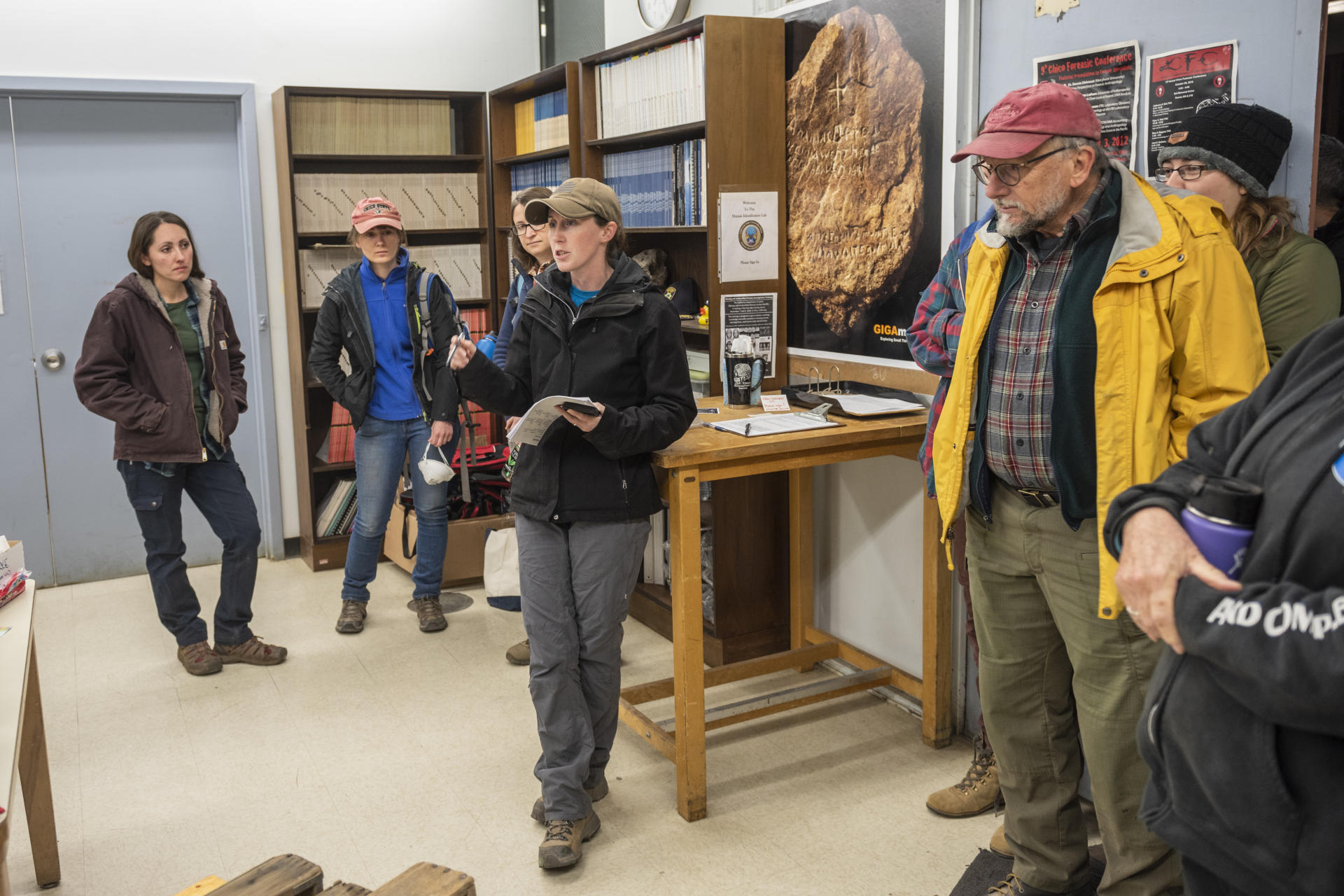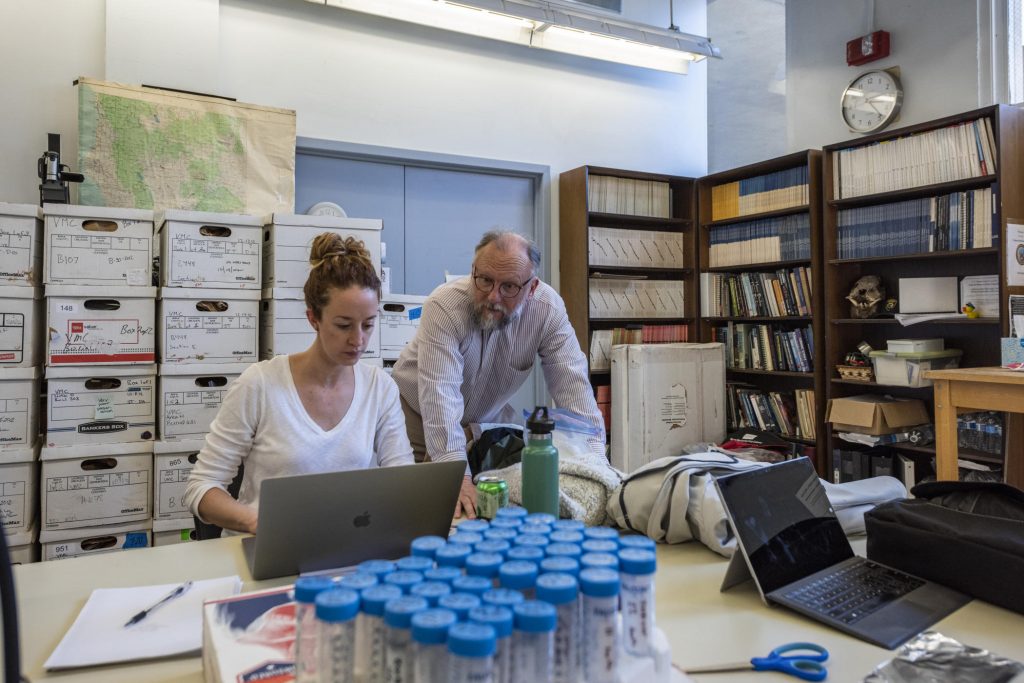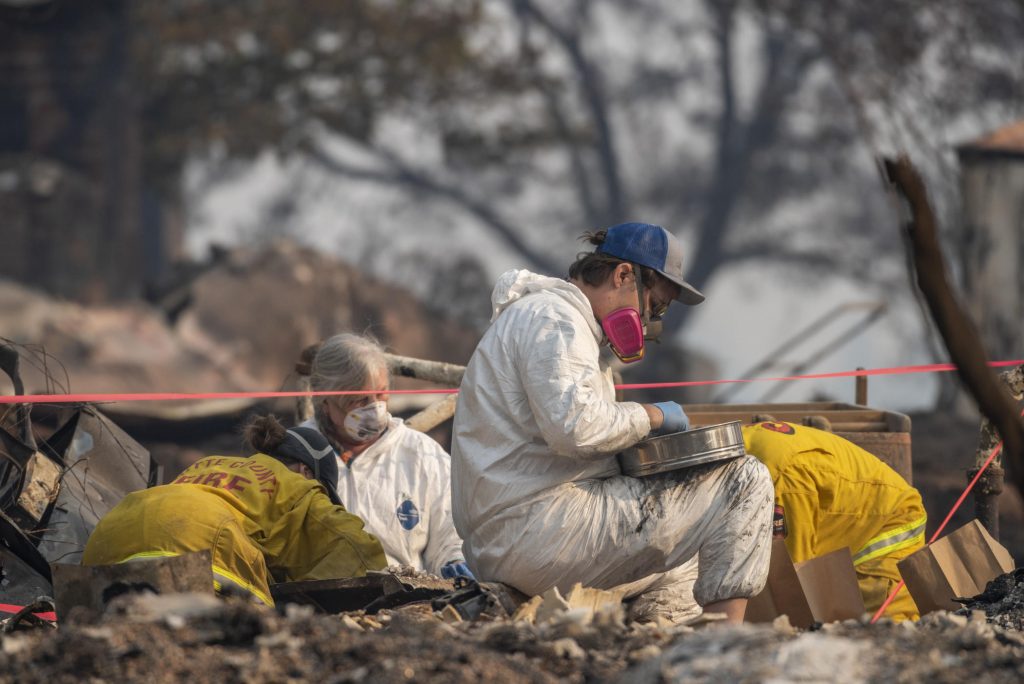2023–24 California State Budget Includes Funding for New Human Identification Laboratory at Chico State

Facility Will Provide Critical Upgrades for the Only Full-Time Forensic Anthropology Lab in the State to Support its Investigations, Disaster Response, and Law Enforcement Training
A long-awaited vision for a new Human Identification Laboratory (HIL) at California State University, Chico is finally being realized, with its funding secured in the California 2023–24 State Budget.
As the only full-time forensic anthropology laboratory in the state, the HIL led the forensic investigations during the Camp Fire and has conducted over 700 investigations in 47 California counties in the last four years to serve dozens of local, state and federal law enforcement partners, including the California Office of Emergency Services, the US Department of Homeland Security and the Federal Bureau of Investigation.
The 50-year-old laboratory is critically in need of a new facility in order to meet expanding demand for its services to recover missing persons, analyze and identify their bodies, present vital information to resolve criminal cases and provide closure to families. The 2023–24 state budget calls for a $3 million allocation to secure bonds that will fund a new facility, expected to cost $46 million.
“Words cannot express our excitement and gratitude for this affirmation of the importance of the Human ID Lab for the State of California,” said President Gayle Hutchinson. “To say it’s a long time coming is an understatement, but we are no less excited that the time has finally arrived.”
Hutchinson first began advocating for a new facility more than 15 years ago during her tenure as dean of the College of Behavioral and Social Sciences. She remained unwavering in her commitment to see it through and worked hand in hand with faculty, government leaders and public safety officials for the last several years to push the plan forward in the state budget. Leading up to her retirement June 30, she expressed how imperative it was for this vision to be a reality.
“This new facility will empower us to rapidly mobilize to provide search and recovery in large-scale disasters, speed identification of remains, and train the next generation of forensic anthropologists who will search, recover, and identify the missing to provide closure to families, bring criminals to justice, and make all our communities safer,” she said during the May state budget revise.

From the new HIL facility, Chico State’s forensic anthropologists will be able to provide search and recovery in large-scale emergencies like wildfires, bus accidents, pipeline explosions and natural disasters. The new facility will offer incredible value for the region’s citizens and for police and coroner’s departments, district attorneys, the California Department of Justice and federal agencies.
The HIL is one of the very few programs in North America—and the only University lab in the Western United States—to provide its kind and caliber of work. The US Emergency Management Assistance Compact lists the HIL as a “deployable” state resource, and Chico State is the only university on its list.
Alumnus Jason Wiersema (MA, Anthropology, ’01) credits his experience as lab manager of the HIL and its casework exposure for accelerating his progress toward a position as a forensic anthropologist. Today, he works as the director of forensic anthropology and emergency management for the Harris County Institute of Forensic Sciences, in Houston, Texas. In addition to the 500 cases his department processes annually, his forensic anthropology expertise led him to work on victim recovery and identification at the World Trade Center site after 9/11, after Hurricane Katrina, the 2005 tsunami in Thailand, and mass graves in Bosnia-Herzegovina.
“It has long been that the [Chico State] program has a unique footprint because of its reach beyond the boundaries of the campus,” he said. “I consider this the greatest asset of the program, and would argue that this is an opinion held widely in the field. It is important that the structure and function of the facility are sufficient to continue to facilitate this unique outreach.”
The site for the new facility is planned at First and Cedar Streets in Chico, adjacent to the University’s primary campus. It will serve as headquarters for the HIL’s services, triple the number of refrigeration units, significantly increase both wet and dry lab space, and add more workstations for lab techs. It also will provide offices, secure lockers and professional changing facilities, better security systems, up-to-date natural lighting, and improved ventilation.
The new HIL will also offer classroom space for Peace Officer Standards and Training (POST) short courses, the Certificate in Forensic Science, the graduate program, and other workshops and trainings. The HIL has provided training to over 2,500 officers in both homicide courses and wildfire search and recovery training for search and rescue teams and coroners. Wildfire trainings are conducted with the curriculum and protocols the faculty developed and which were adopted by POST for use in their certified training program. Officially supported by the CA Office of Emergency Services (OES), the HIL training program and protocol are included as continuing education for county personnel, law enforcement, coroners, medical examiners, and emergency personnel involved in search and rescue efforts throughout the state.
“Our teams are incredibly excited by this development. While we have made due for years in our current facility, we can breathe a sigh of collective relief about what the future holds,” said Colleen Milligan, co-director of the Human Identification Laboratory. “Once again, we cannot thank our elected officials, law enforcement partners, and the public enough for their help to emphasize the importance of this facility and the value in the services we provide.”

The HIL’s faculty members represent half of the board-certified forensic anthropologists in the state of California. They manage more than 120 cases annually, with the caseload growing sharply in recent years. Their unique expertise provides:
- Search and recovery fieldwork of outdoor scenes, including sites of major disasters such as wildfires.
- Laboratory analysis of skeletal remains in which staff identify age, sex, ancestry, and stature of unidentified remains, and analyze trauma and cause of death.
- Outreach and training to law enforcement agencies, including the FBI.
- In 2017, staff who are also certified Peace Officer Standards and Training instructors offered 12 homicide courses. They also offer trainings on excavation methods, human remains recovery, and bone identification.
- Consultation on national and international cases as well as an active role in discussions on laboratory accreditation and best practices.
When the lab was founded by Professor Emeritus Turhon Murad in the early 1970s, forensic anthropology was just beginning to be seen as its own science. Today, the HIL is operated by four full-time faculty and one staff member, and about 30 graduate and undergraduate students who are awarded access through a competitive internship process each semester.
Because of its advanced expertise, the lab handles some of the more difficult cases in the state, providing services at minimal or no charge. They assist on everything from unintended deaths to homicides, as well as archaeological and historical cases, including whether they are subject to the Native American Graves Protection and Repatriation Act and California Native American Graves Protection and Repatriation Act.
The HIL’s most famous cases include investigating the death of Polly Klaas, a 12–year-old girl who was kidnapped from her Northern California home in 1993. They also assisted on the San Bruno pipeline explosion in 2010 and the 2014 Interstate 5 bus crash in which 10 high school students were killed, along with their driver and a truck driver. Also, as California’s landscape and climate continue inevitably changing, the HIL is responding to an increasing number of wildfire-related deaths. Its team, with support from alumni and other state and federal partners, led the recovery and identification of more than 80 individuals in the deadly 2018 Camp Fire and continue to respond to wildfires on an annual basis.


